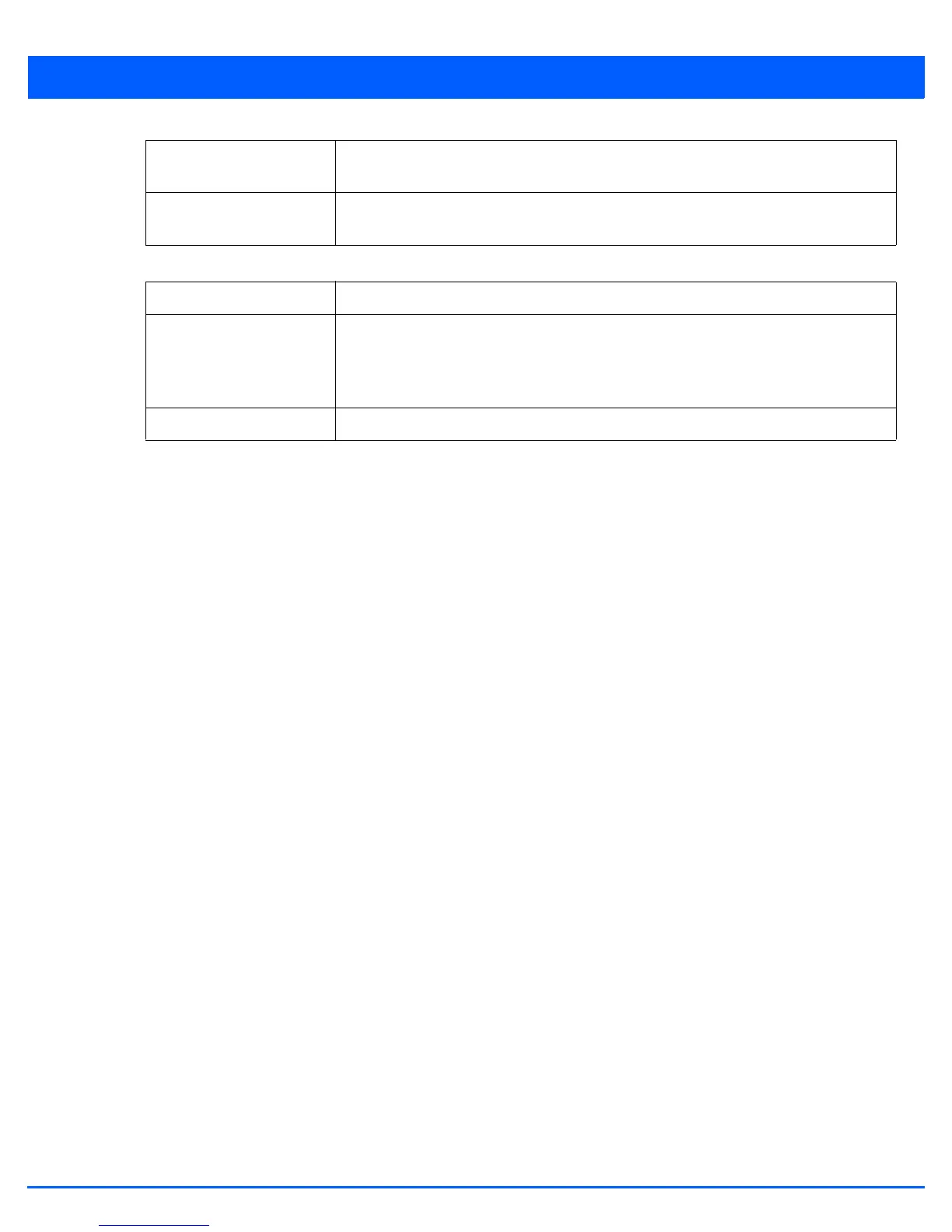Device Configuration 5 - 213
5. Select the following Additional Credentials required for the generation of the CSR:
6. Select the Generate CSR button at the bottom of the Create CSR screen to generate the CSR.
5.4.3 RF Domain Overrides
Overriding a Device Configuration
Use RF Domain Overrides to define settings overriding a target device’s original RF Domain configuration.
An RF Domain allows an administrator to assign configuration data to multiple access points (of the same model) deployed in
a common coverage area (floor, building or site). In such instances, there’s many configuration attributes these devices share
as their general client support roles are quite similar. However, device configurations may need periodic refinement from their
original RF Domain administered design. Unlike a RFS series controller, an access point supports a single RF domain. An access
point RF Domain cannot be used on a different model access point. For example, an AP6532 RF Domain override can only be
applied to another AP6532 model access point.
To define a device’s RF Domain override configuration:
1. Select the Configuration tab from the Web UI.
2. Select Devices from the Configuration tab.
3. Select Device Overrides.
4. Select a target device from the device browser in the lower, left-hand, side of the UI.
5. Select RF Domain Overrides.
Organizational Unit (OU) Enter an Organizational Unit for the name of the organization unit used in the CSR. This
is a required field.
Common Name (CN) If there’s a Common Name (IP address) for the organizational unit issuing the certificate,
enter it here.
Email Address Provide an E-mail address used as the contact address for issues relating to this CSR.
Domain Name) Enter a FQDN as an unambiguous domain name that specifies the node's position in the
DNS tree hierarchy. To distinguish an FQDN from a regular domain name, a trailing period
is added. For example, somehost.example.com. An FQDN differs from a regular domain
name by its absoluteness, since a suffix is not added.
IP Address Specify the IP address used as the destination for certificate requests.

